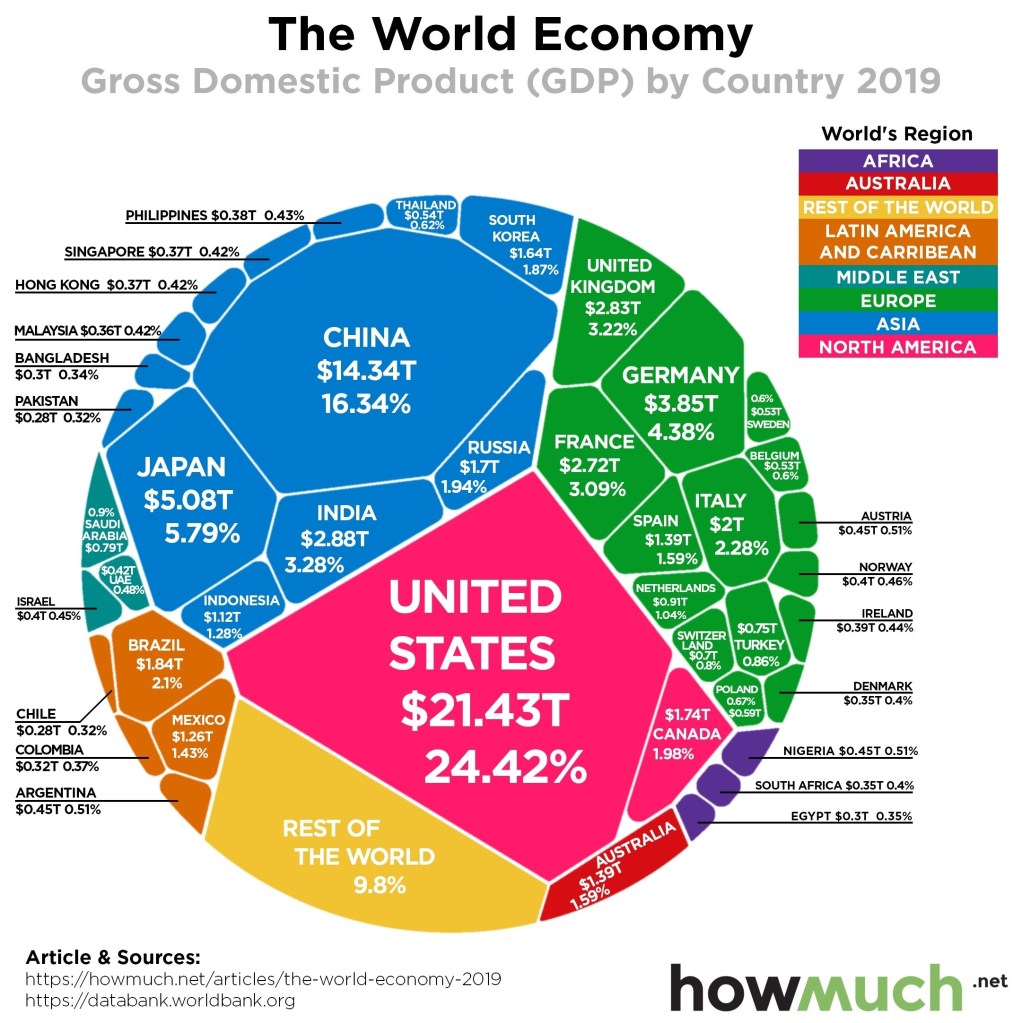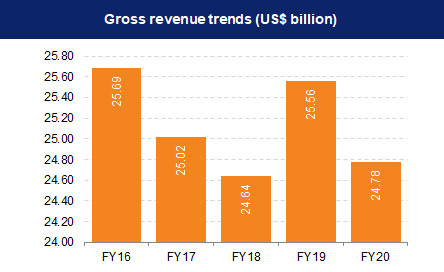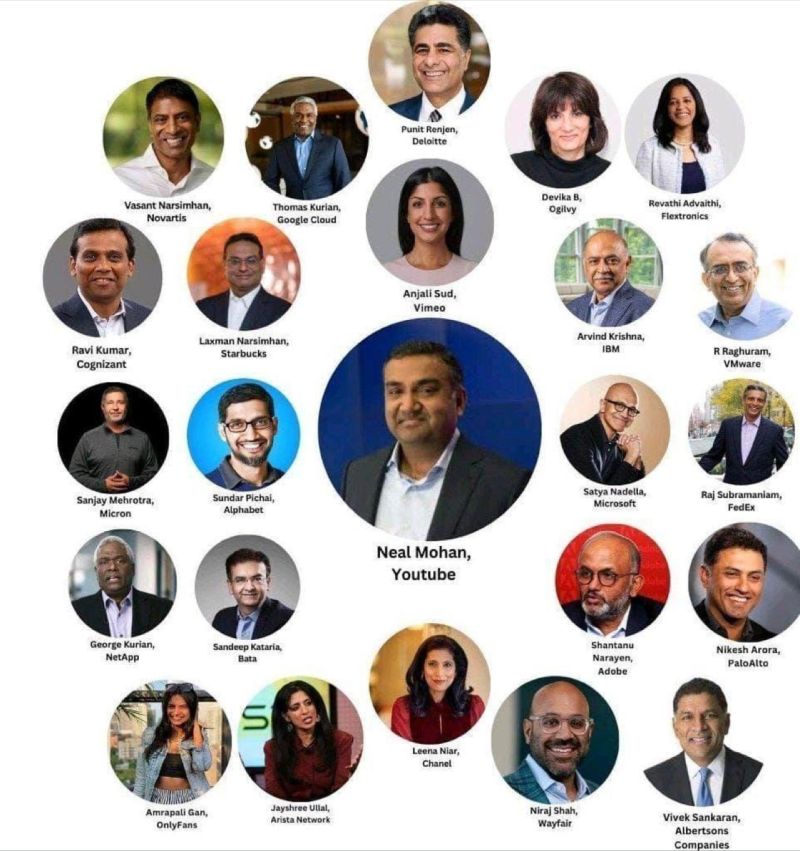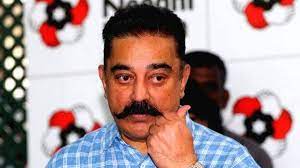The Gross Domestic Product GDP of a nation matters over the individual Per Capital Income (GDP Per capita). GDP is networth of a nation often in fact underestimated, typically as in the case of India. Per capita income is income per head. Oil based economies boast of highest PCIs in the world. Whereas USA, China, India, Germany, France, Russia and Japan are the leading world economies when it comes to sum total Gross domestic product.
INdia is very much underestimated in this list. America holds world’s largest bullion reserves and China is a feverish buyer for sometime now. But the gold held by Hindu temples and Hindu homes never is accounted for, which may exceed entire gold holdings of America and China and Middle east put together. Hindu temples are immensely wealthy flush with diamonds and gold coins and gold jewelry. Indian homes hold caches of gold and diamond jewelry passed over for generations as well as designer ones from present. Official bullion holding by govt of India may be far less.
https://www.thearchaeologist.org/blog/the-1-trillion-padmanabhaswamy-temple-treasure
https://www.mygoldguide.in/4-breath-taking-gold-temples-india

India is dotted with architectural marvels – our Hindu temples – millions of them, most of which are easily 2000 years old. These ancient sculptural feats hold within them panchaloka (5 metal), brass, bronze, silver statues worth billions of dollars. Most expensive silks of the world Benarasi and Kanjivaram are woven in India. World’s best mangoes grow in India. We are the world’s largest exporters of rice, wheat, milk, poultry products, beef. We export softwares and hardwares and automobiles and cell phones. Local manufacturing is strong. Even oil and gas are mined in India but we import both to cater to our industrial and domestic needs. We in India are looking forward to fossil fuel free world – that will forever liberate us from dependency on our oil imports. We welcome the green era with electric cars. That is bound to do wonders for a nation like India. These are the reasons I believe India is rightfully the 3rd largest economy in the world (not taking into account our natural resources, our farm bounties, our rivers, our mountains etc. One of the most blessed nations in the world that is timeless and ageless: that is my Bharat, India. We, some 1.3 billion Indians, share our motherland with native lions, tigers (highest count in the world again), Asian elephants and myriad species of other wildlife (including India’s own exclusive single horned rhinos) and flora and fauna and the avian families. Who will put a bill on all of this?)

Gulf nations are very tiny compared to vast countries like India or America or Canada or China or Russia. So concentration of wealth is in one or two or three cities that make them look richer. In my country India, wealth is SPREAD. Widespread. INdia’s wealth is not constituted out of her natural resources such as oil and gas. India’s wealth is MANMADE – acquired with the hardwork and dedication of our masses.
Which is why, its the GDP of nations that matters. The wholesome output of an entire nation and its share in the world market matters over individual per capita income. Even if we compute PCIs, at least two Indians are among the world’s 20 richest: the Ambanis and the Adanis. Adanis are among the world’s top 10. Their wealth is entirely based on production oriented manufacturing industries.
The quality of wealth, the ways and means of acquisition of wealth – all these matter. The wealth of India also lies in the manuscripts in Sanskrit, Tamil etc., that date back by thousands of years.
There is a deliberate miscalculation of dates and wrongful and willful misrepresentation of history and wars. This was the biggest mischief committed by the British. For instance, the British put the date of Adi Shankaracharya by 7th century CE. Whereas Hindu history reveals that Adi Shankara turned the river Poorna with his pleas and prayers so that his mother could have her ritual bath every day in her old age. Carbon dating now points to river Poorna diverging from original course to 3rd century BCE – which means the British made a huge error of judgment in charting Adi Shankara’s birth and history. Hindu history is easily 10000 years old. Most Hindu saints were born before the birth of Christ. Tamil and Sanskrit literature we read even today are from 500 BCE minimum. Advance grammar and standard of prose and poetry can have no precedence.
Our GDP also may include our railway networks, airports, shipping, defence, space industry, infrastructure including highways, investments in tech parks, metros in every city, mining, farming, fishing etc. World economies hardly take into account such a grand picture.
Only nation on earth to have Brahmos missiles now exported to the Phillipines:
India’s space agency ISRO, a chief contribution to Indian economy, launching for foreign clients:
Worth of Indian railway network alone:

https://www.ibef.org/industry/indian-railways
Indian economy is very diverse. We don’t keep all eggs in one basket. Our pharmaceutical industry, health care industry, textiles, food industry, dairy, leather industry everything is a high performer. In Information technology (IT(n we are pioneers.
So it really shocks me that those in the west see only what they want to see like the Indian slums and put us down. The truth is: INDIA IS THE THIRD RICHEST COUNTRY IN THE WORLD after China and the US.
UK story is over since long. One reason for BBC to degrade India by propaganda is this: bitter envy. Dear BBC, even the Kohinoor of your Buckingham palace is originally STOLEN from Hindu temple of Mother Badrakali in Warrangal in India. UK lived a fancy rich life with stolen wealth from India, Asia, Africa. Now Brits are high on welfare aren’t they!
India is an all round robust economy, very well balanced. We look forward to shifting over completely to green gases in 10=20 years that shall cut down our oil and gas (fossil fuel) consumption. This can do wonders for the Indian economy and our environment.
My nation also exports GLOBAL CEOS!
THE GLOBAL CEOS FROM INDIA:




